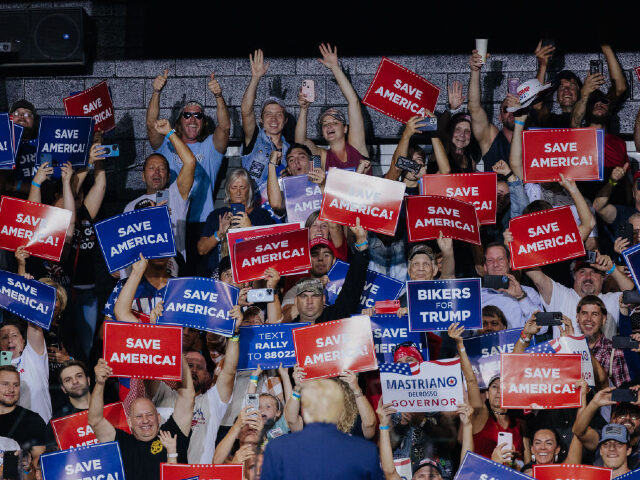The percentage of Americans who identify as Democrat was at a record low in 2023, putting party members in a “weaker position than they have been in any recent election year,” a new Gallup poll found.
Out of more than 12,000 U.S. adults, 27 percent say they identify as Democrat — the lowest percentage since Gallup began tracking the metric in 1988. The margin of sampling error is ± one percentage point at the 95 percent confidence level.
“Democratic identification has now declined by one point in each of the past three years. These declines, and the new low registered in 2023, are likely tied to President Joe Biden’s unpopularity,” according to the Gallup poll report. “Biden’s job approval ratings have largely been around 40 percent since late 2021, and were consistently below that mark in October, November, and December.”
Gallup 2023 average: Do you consider yourself a Republican or a Democrat? (with Indie leaners)
Republican: 45%
Democrat: 43%Best numbers for GOP since 1991
—
Without leaners:43% identified as independents, tying 2014 record
27% identify as Democrats (record low)… pic.twitter.com/60SsG3mVyC
— InteractivePolls (@IAPolls2022) January 12, 2024
The survey found that independents continue to make up the largest political bloc in the U.S., with an average of 43 percent of adults identifying as such way in 2023 and tying the record high in 2014.
According to the poll:
Independent identification has been 40 percent or higher each year since 2011, except for the 2016 (39 percent) and 2020 (39 percent) presidential election years. Equal 27 percent shares of U.S. adults identify as Republicans and Democrats, with the Democratic figure marking a new low for that party in Gallup’s trend.
Gallup found that independents have outnumbered both major political parties since 1991, except in several years between 2004 and 2008. The rising share of independents “has come more at the expense of Democrats than Republicans, which might be expected since Democrats were previously the largest political group,” the report states.
Gallup also asked respondents who identify as independents whether they lean Republican or Democrat. In 2023, slightly more independents leaned Republican than Democrat, resulting in 45 percent of U.S. adults identifying as Republican/leaning Republican compared to 43 percent who are Democrat/lean Democrat.
“Democrats are clearly in a weaker position than they have been in any recent election year. This is based on the new low percentage of U.S. adults identifying as Democrats, as well as the Republican advantage in leaned party identification,” according to Gallup’s analysis:
In the past four presidential election years, Democrats had at least a five-point advantage in leaned party identification. They won the popular vote each of those years, though Republican Donald Trump won the 2016 election based on the Electoral College vote.
The report continues:
The 2023 figures are similar to those from 2022, when Republicans had a one-point advantage (45 percent to 44 percent). Republican advantages have been rare since Gallup first began measuring independent political leanings on a regular basis in 1991. In fact, 2023 is just the third time Republicans have had even a slight edge, along with 1991 and 2022.
Gallup also asked respondents to describe themselves on a liberal-to-conservative spectrum. In 2023, 36 percent of U.S. adults identified as conservative, 36 percent identified as moderate, and 25 percent as liberal, staying roughly the same as averages from the past ten years, the survey found.
Interestingly, liberal identification has increased since the 1990s and 2000s, when the marker was under 20 percent.
“As Gallup has previously documented, the increase in liberal identification reflects big shifts in how Democrats describe their political views. Last year, 53 percent of Democrats identified as liberal, 35 percent as moderate and 11 percent as conservative,” according to the poll report. “While similar to the level in 2022, the 53 percent liberal figure is up from 43 percent in 2013, 32 percent in 2003 and 25 percent in 1994 (the first year Gallup analyzed ideology by party identification).”
As for Republicans, 73 percent identify as conservative, while 22 percent say they are moderate. Forty-eight percent of independents identify as moderates, while 30 percent identify as conservatives, and 20 percent identify as liberals.

COMMENTS
Please let us know if you're having issues with commenting.